Table of Contents
Are you planning to grow Asparagus at home? And if you are looking for some essential guidance on how to grow asparagus in the UK? Then you are at the right place. Asparagus is a health-beneficial plant that can last up to 20 years after you plant them. However, they require well-drained soil with shaded beds to grow. And if you can make an ideal asparagus bed, you can enjoy delicious asparagus for years.
Also, market varieties of asparagus are more expensive than homegrown ones making it preferable to grow them at home. Asparagus can grow from both seeds and crowns; you need to do is to prepare a suitable bed, maintain them well and have some patience to harvest them at the right time. One asparagus plant can sprout up to 10 spears each season, making it ideal for growing on a small scale.
And today, we will discuss growing asparagus, such as steps to grow, harvest methods, and common issues to watch out for while growing asparagus at home.
How to Grow Asparagus Plants
If you want to know how to grow asparagus? You must read on as we will discuss detailed steps to grow asparagus, from choosing a plant to preparing the soil to grow and harvest.
1. Choosing the Right Plant
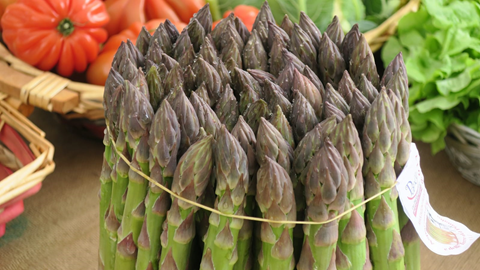
Choosing the right plant is your first crucial step for growing asparagus at home. Asparagus is usually grown from dormant roots, seeds or crowns. Dormant roots are the most widely used and easiest method of growing asparagus. And if you are using it to grow your asparagus, you can start harvesting after 2 years of planting.
But the crowns or seedlings require more time, and you must wait for at least 3 years after the plantation to harvest them. Also, choosing a variety of species like Mondeo or Blacklim is an essential part as it will affect your harvest time and quantity. For instance, if you want more spears, you must opt for the hybrids that offer all male plants. But if you choose the non-hybrid crowns, they will produce both male and female (less productive) plants. Remember, hybrid crowns can also produce female plants that you must weed out to minimise the competition. Plus, if you want, you can plant Asparagus Mondeo Crowns in various colours and sizes and harvest time asparagus for a wholesome and long-term harvesting experience.
2. Prepare Your Asparagus Bed
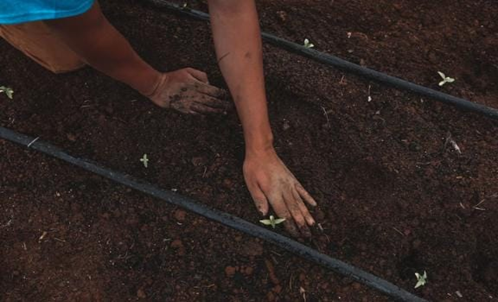
If you are wondering how to grow asparagus in the UK, you must learn how to prepare your asparagus bed. Asparagus plants can last for 20 years and offer multiple spears every season. So, preparing the ground properly is worth investing your time and money. Asparagus does not thrive well in a competitive environment. So, you must not plant asparagus with other plants and carefully weed out the soil before planting them. Also, avoid planting new asparagus in old beds to prevent pest-related problems.
Try to make a bed dedicated, and it will drain your asparagus. Asparagus grows well in full sun, but it can also bear patches of shade. They are also compatible with various soil types with proper water drainage systems. The ideal pH for asparagus is 6.5 to 7.5. and you may need to lime your soil if it is too acidic. Also, if your soil is too heavy, raise your asparagus bed from the ground to help in water drainage. In addition, dig up your bucketful of natural compost and plant each asparagus crown or plant at a distance of 18in or 45cm. It will help the plant to grow well without hampering others’ growth.
3. Sowing
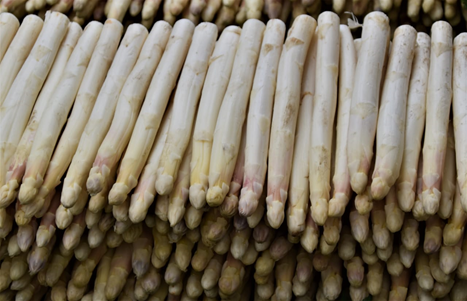
Many people wonder how to grow asparagus without losing the harvest size. So, if you also want to grow and harvest asparagus well, you must focus on sowing besides choosing the right plant and preparing the soil. You can sow asparagus like Asparagus Vittorio Crowns Bare Root Perennial Outdoor Garden Salad Vegetable both indoors and outdoors, according to your convenience. And then transplant them to their original bed at the right time.
So, if you want to do it indoors, you must start in February when the weather is around 13° to 16° C. You can use modular trays or small pots and fill them with seed compost. Then plant one seed in each pot or modular tray container. Water them well and place them in full sun. Once the frost is over, harden your plants and transplant them to their original bed in June (early). If you want to sow them outdoors, you must sow them between March to April. Drill the ground 2.5 inches deep and place each seed up to 30cm to 45 cm apart. Also, try to thin out the seedlings about 6 inches apart to protect them from snails and slugs. And finally, transplant them into a well-prepared bed in the following March.
4. Plant Your Asparagus
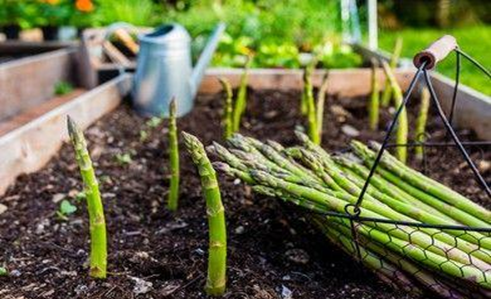
Are you concerned about how to grow asparagus? Then you must know about the right methods of sowing and planting. Once you have prepared your asparagus bed and sow the seeds or crowns properly, you can opt for planting your asparagus seedlings or crown on the bed. Dig a trench 20 cm deep and 30 cm wide to start the planting. Put well-rotted manure or garden compost on the bottom. Then you can cover it with a 5 cm layer of soil.
After that, create a ridge or raised bed of 10 cm at the centre of your trench. Put your asparagus crowns on the ridges (keep the shoots or new sprouts up). Remember to space them 30 to 40 cm apart from each other. Also, spread the roots carefully without damaging them. Then mix garden compost with the left soil (excavated) and return them to the trench, leaving the buds of your asparagus sprouts. Water the bed well and add a 5 cm layer of well-rotted manure mulch or compost to prevent slugs and weeds. Also, remember to weed out the bed frequently to ensure your asparagus does not suffer from competition and grow well.
5. Taking Care of Your Asparagus Plant
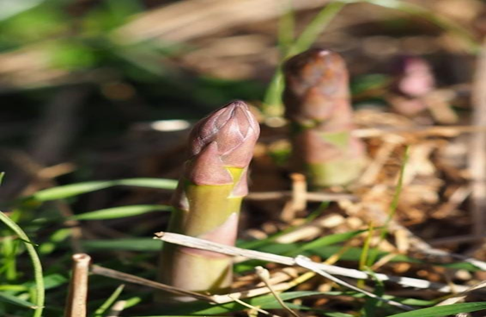
If you are wondering how to grow asparagus and make most spears from your plants, you must take good care of your plants. You must keep your asparagus weed free and well-fed to get more sprouts and grow healthy plants.
Here are a few ways you can take care of your asparagus plants.
Weed Out Female Plants and Other Competitors
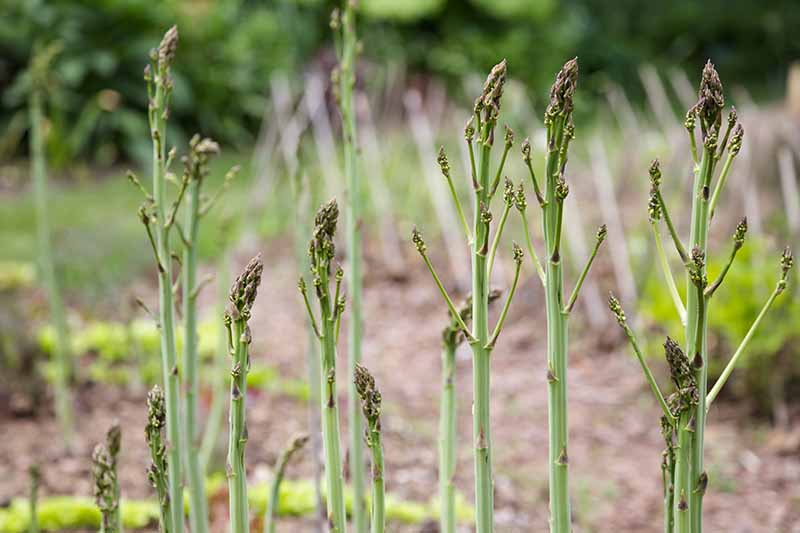
Asparagus grows best without any competition. So, you must regularly weed out female plants and other weeds from your asparagus bed. If you have a female plant that produces red and orange berries, weed out all new plants it produces. Remember that all-male plants can also produce female plants occasionally. So, always keep an eye on the new plants. Also, remove weeds regularly to help your asparagus grow without competition.
Watering It in Prudent Way
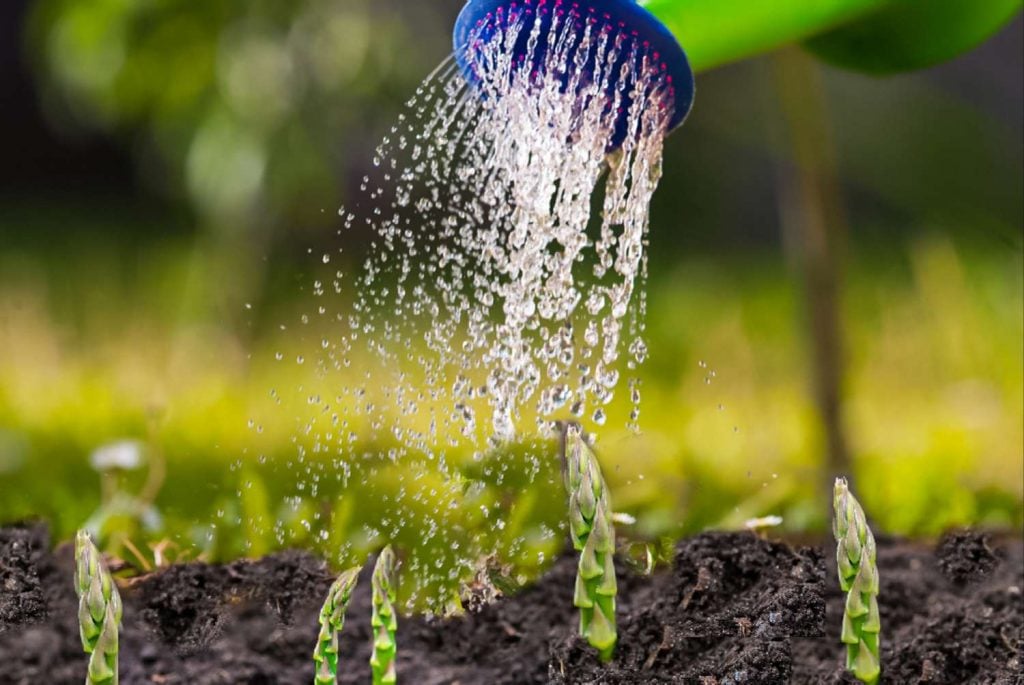
Many wonder how to grow asparagus in the UK and how much watering they need. It is natural to think about it as a gardener. You must regularly watch your new asparagus plants throughout the summer season. And once your asparagus plants mature or one year older, only water them during prolonged dry spells. It is because when asparagus begins to mature, they also become drought-tolerant.
Mulching Technique
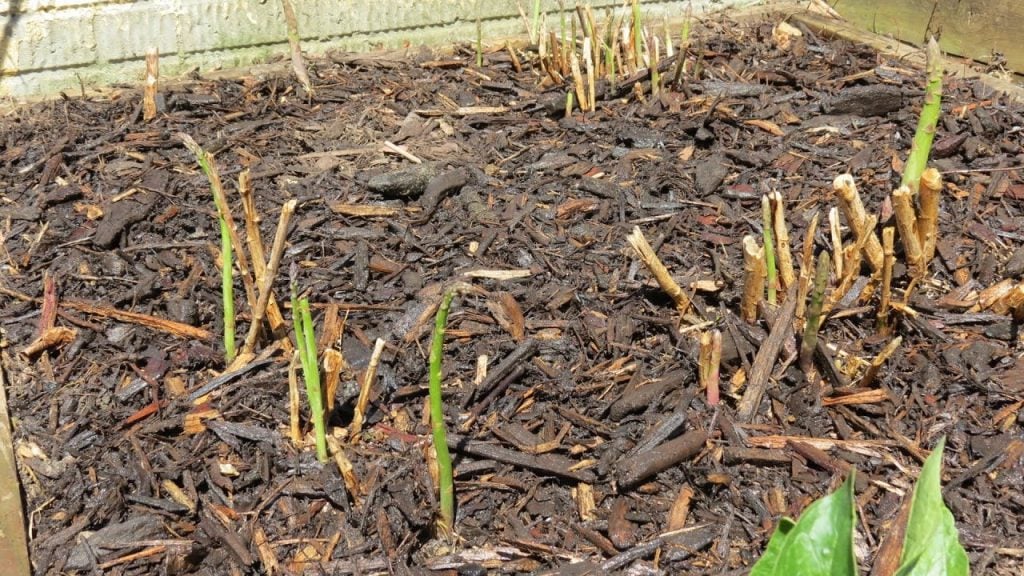
Mulching is another crucial part of growing asparagus. And if you want to know how to grow asparagus healthily, you must learn to mulch the bed and protect your plant. You must cover the asparagus bed from late autumn to winter to prevent weeds from germinating. Mulching also helps to lock the moisture of the soil inside during winter. Use a weed-suppressing membrane to mulch the bed.
Feed Them Properly
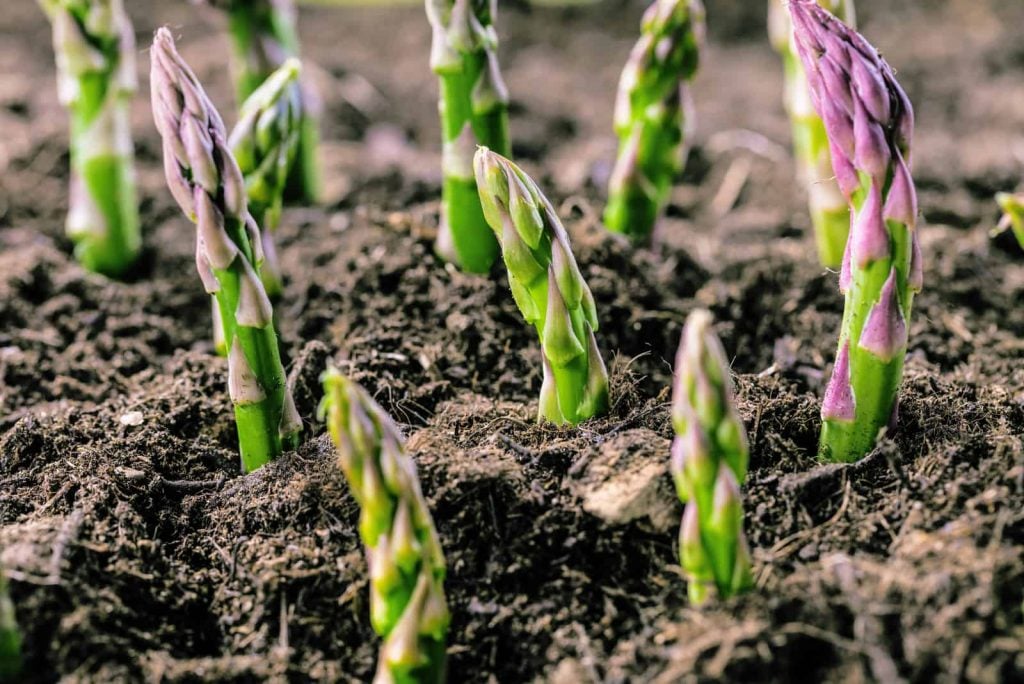
Feeding is also vital for growing asparagus. Usually, you need to feed your plants with high-potassium compost, like potassium liquid fertiliser, in spring. Plus, if you face weak growth in your asparagus plants, you can apply the same compost again after the harvest.
Supporting Technique
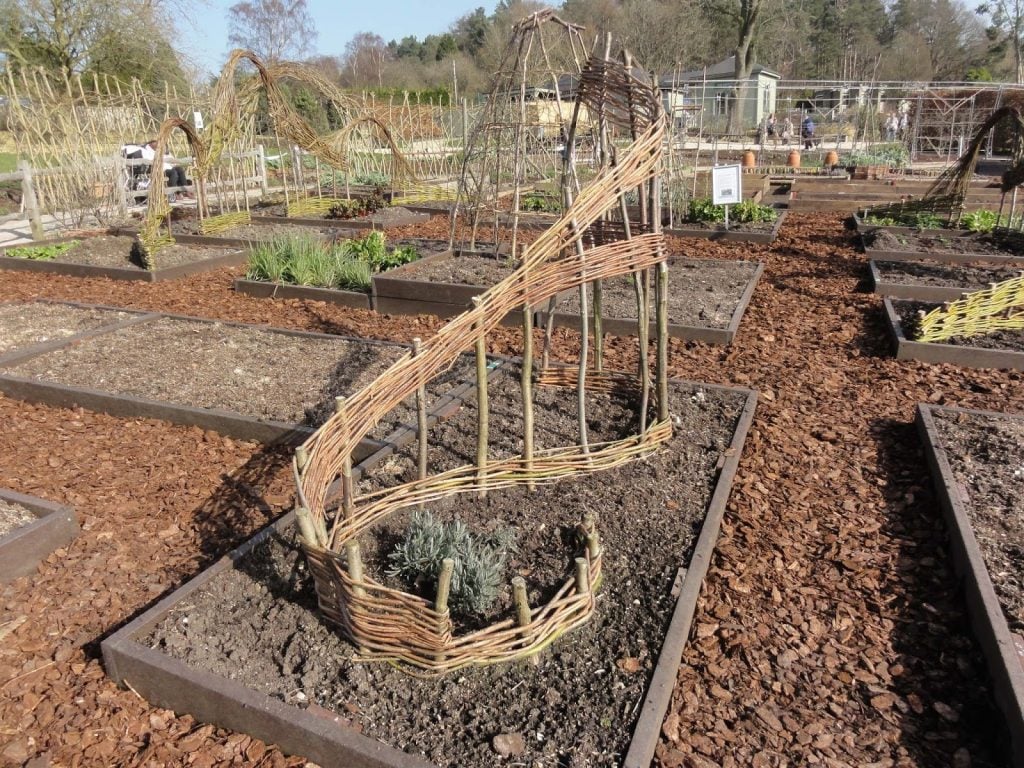
As the asparagus grows, they become bushy with plenty of feathery branches. They are delicate and get damaged easily in windy weather. However, broken or hurt twigs affect the quality of crowns. So, you must provide support with twines and stakes on both sides of the row to protect them.
Propagating Process
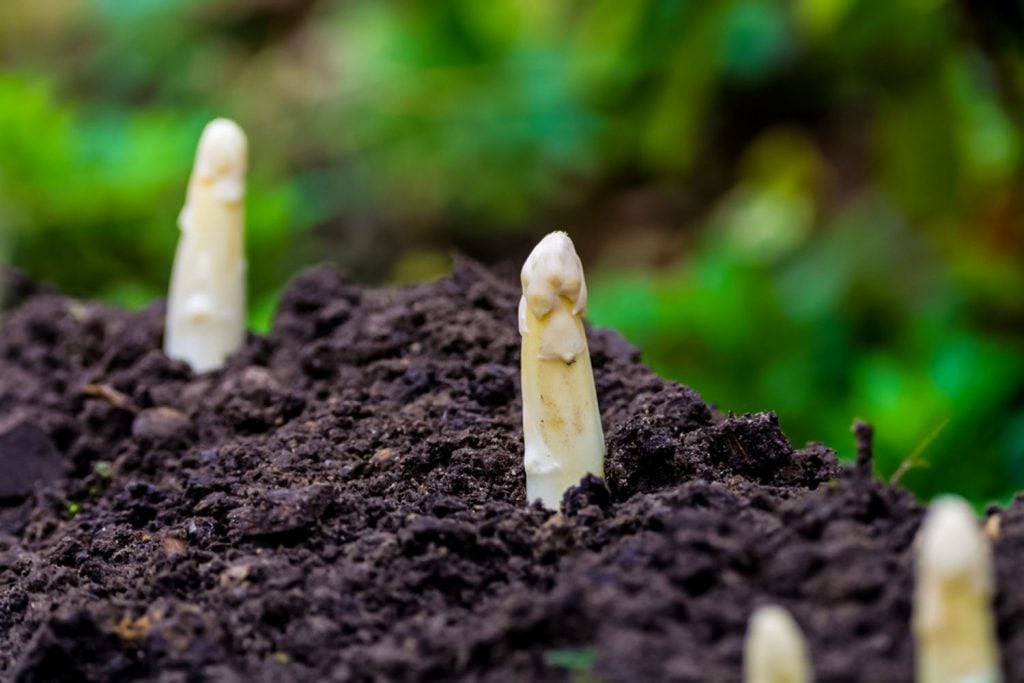
If you want to increase your asparagus plant, you can do it with crown planting. Identify well-established crowns from your old batch and cut them in late winter or early spring. Sow and transplant them using the same method you learnt above. If you need, you can cut some wood, or it is challenging to remove roots during replantation. But be careful not to harm the plant. Also, remember to do this only once every three years, as asparagus takes time to return to its early state.
Harvesting Methods
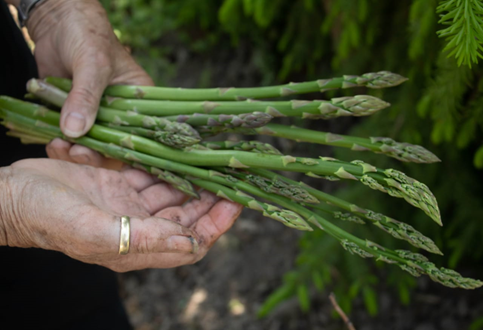
If you are wondering how to grow asparagus in the UK, you may also like to know the correct method and time for harvesting them. Freshly harvested asparagus spears are the most delicious and flavourful, better than any supermarket products. However, if you want to get asparagus for a long period, you must resist the temptation to cut the spears in the first year. You must wait 2 years if you use crowns or 3 years if you use seed before harvesting.
To harvest, cut the spears below 2.5 cm from the soil. Also, do not grow the spears above 18 inches, or they will become woody. In addition, you should harvest regularly during the harvest period to encourage the growth of more spears.
Things to Look for While Growing Asparagus Plants
We have already discussed how to grow asparagus and its harvesting method. And now, we will focus on problems or issues (like pests and plant diseases) you must watch out for while growing an asparagus.
Slugs – Slugs are one of the most common yet dangerous threats to asparagus. Slugs can eat and make holes in the leaves, stems and flowers of the plant and affect the quality of your harvest. You can use biological pest control and collect and remove methods to prevent slugs and snails from harming your plant.
Asparagus Beetle – Another common issue you can face that can trouble your asparagus growing is the asparagus beetle. They appear in the summer and are usually seen in the asparagus foliage. You can use plant-friendly pest control products to get rid of them.
Frost – Frost can also harm the growth of new stems and flowers of your asparagus. Try to cover the plants during the frost to protect them from damage.
Summing It Up
All in all, asparagus is a very beneficial vegetable that does not require much maintenance to grow at home. You can use seeds or crowns to grow asparagus in your garden. Also, once you plant an asparagus plant, you can harvest it for 20 years, which makes it a great deal to grow at home. However, you must prepare a dedicated bed for asparagus and sow and transplant them properly to achieve a desirable size harvest.
You must keep the soil well-drained and weed-free to make the most of planting asparagus. Also, remember to follow adequate harvest methods to promote the longevity of your plant. Here, we have discussed how to grow asparagus, including steps to grow, plant care methods, harvest methods, and more. So, are you ready to grow some delicious asparagus at home this year? Get your favourite spices and start your journey to grow asparagus at home.
Frequently Asked Questions
When Is the Best Time to Plant Asparagus?
Usually, cultivators and gardeners plant asparagus crowns with bear roots in spring. But you can also plant them in late autumn. During this time, the soil stays warm and helps the plant to settle down without much obstruction easily. So, you can plant your asparagus in both spring and autumn. Try Asparagus Crown Backlim by Thompson and Morgan or Mondeo by Thompson and Morgan for the best results.
Can I Grow Asparagus from Seeds?
You can grow asparagus from seeds. However, most people prefer to plant year-old dormant crowns with bare roots. They are easy to grow and enable quick harvest seasons within two years of planting. On the other hand, seedlings take more time to grow, and you cannot harvest within three years of planting your asparagus. Also, crowns are available in various spices for planting. To know more, you can read the above on how to grow asparagus.
How To Grow Asparagus In A Raised Bed?
If your soil is heavy, you may need to grow asparagus in a raised bed. You must create a 4ft tall bed and create a trench at the centre. Follow the general instruction for asparagus bed preparation. You must also add plenty of compost and horticulture grids for an easy water drainage system. Also, remember to water your plants well to encourage growth.
Can I Grow Asparagus In A Container?
The best place to grow asparagus is in the ground. But in case you cannot find a suitable ground to grow asparagus, you can plant them in containers instead. You can use large-size pots or patio bags to plant asparagus. Still, you must not forget that container-grown asparagus have a shorter lifespan than the ground cultivated once. And you can harvest them for only 2-4 seasons after the two years of establishment.
How To Prepare An Asparagus Bed?
If you want to know about how to grow asparagus, you must also be curious to know how to prepare the bed for asparagus. It is simple. You need to make a trench and put some rotted manure or compost at the base. Then make ridges at the centre of the trench where you will plant your asparagus crowns. You may also read the above soil preparation method for asparagus plants to understand better.

![Step-By-Step Guide on How to Grow Asparagus [UK]](https://www.thearches.co.uk/wp-content/uploads/How-To-Grow-Asparagus-Plants.jpg)



